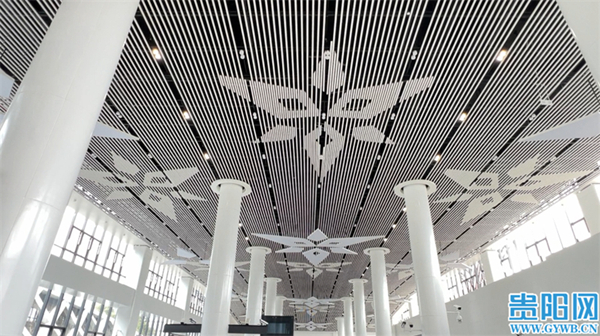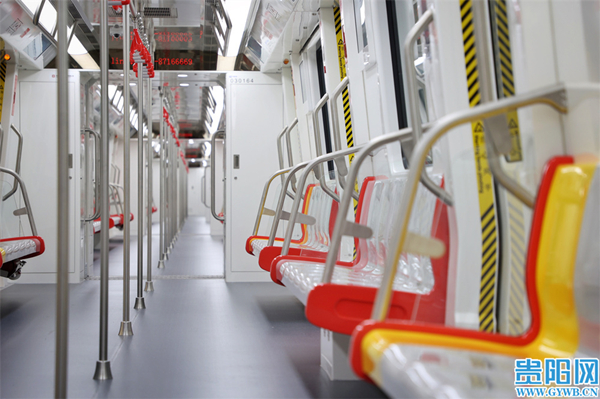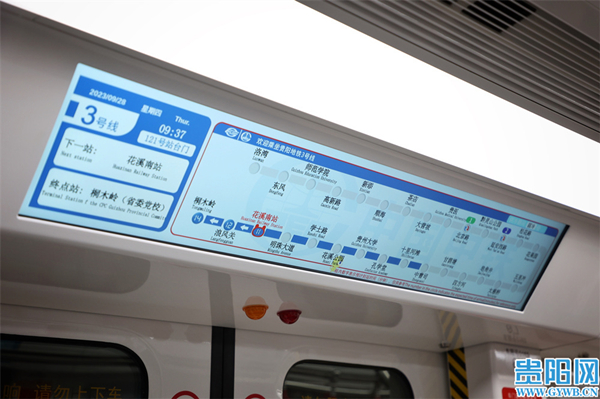Guiyang Metro Line 3 to debut soon
Guiyang Metro Line 3 in Guiyang, capital of Southwest China's Guizhou province, is set to open this month.
The metro line is a major backbone route connecting the north and south of Guiyang and passes through Huaxi, Nanming, Yunyan and Wudang districts.
The first phase of the line starts at Tongmuling Station and ends at Luowan Station in Wudang, with a length of 43.03 kilometers and a route filled with 29 stations.

The triangular light strip elements on the ceiling above Luowan Station on Guiyang Metro Line 3 are inspired by Guiyang's city flower, the orchid. [Photo/Guiyang news network]
To reflect the unique culture and environment of each station, the metro line has designed specially themed logos, creating cultural symbols that represent Guiyang.
For example, at Beijing Road Station, interior LED walls showcase significant events that have shaped Guiyang's development over the years. The LED walls at Huaxi Park Station feature the natural beauty of the park, allowing passengers to experience the charm of Huaxi Park right in the station hall.
"In addition, the entrance and exit signs of each station on Guiyang Metro Line 3 also incorporate patterns from Guizhou's ethnic costumes," said Long Man, a station attendant at Beijing Road Station.

Colored seats inside a train on Guiyang Metro Line 3. [Photo/Guiyang news network]
All stations on the line are equipped with nursing rooms and barrier-free restrooms. Each electric train on the line has a multi-functional area in each carriage, which provides handrails and additional wheelchair fixing straps for disabled passengers.
The air-conditioning temperature can be adjusted to either strong or weak cooling in different carriages according to passengers' needs.

An electronic display on a train on Guiyang Metro Line 3. It shows the route map, information about the departure station, the time of arrival at the next station, and more. [Photo/Guiyang news network]
In addition to considerate passenger services, intelligent design elements can be found throughout train carriages and platforms.
Each electric train on Line 3 is equipped with an advanced intelligent operation and maintenance system, which can collect and store the real-time data of the train, and the working status of various systems.
That data can be transmitted and displayed in the driver's cab and the ground control center. By utilizing big data platforms and multiple sources of heterogeneous data processing, maintenance and operation services will be greatly improved.
According to Hu Mingqiang, a station attendant, all stations on the line have introduced an intelligent customer service system. Through this system, passengers can complete operations such as failed exits, ticket purchases, or information queries through self-service devices.
In addition to mobile and cash ticket purchases, the metro line also supports ticket purchases by means of voice order, so passengers can even use their native Guizhou dialect to buy tickets.
Presented by China Daily.
黔ICP备05001922号-3
